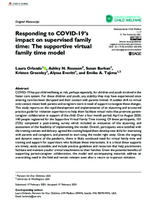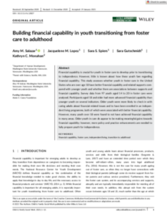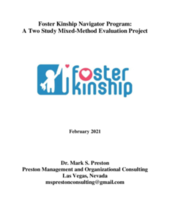Displaying 351 - 360 of 2215
This study reports on the rapid development and implementation of an eLearning and structured practice guide for visitation supervisors to help them facilitate virtual visits that promote parent-caregiver collaboration in support of the child.
This article from Teen Vogue shares the stories of young people aging out of foster care in the U.S. during the COVID-19 pandemic and the impacts that has had on them.
This webinar sheds light on the often under-the-radar work and impact of more than 3,000 Family Resource Centers in the U.S.
UNICEF is seeking a Child Protection Specialist to conduct a review of the CP HQ portfolio within key units of the section and identify entry points to bring a disability inclusion focus into those, to be progressively incorporated within child protection programming and results monitoring.
This study assesses whether youth in foster care in the United States who are over age 18 have better financial capability and related supports compared with younger youth and whether there are associations between supports and financial capability.
This webinar will include the experience of Resilient Children and Families Community Services implementing the Standards of Quality for Family Strengthening & Support with its eight Family Resource Centers in New York State.
This systematic narrative review of the literature reports on the experiences of foster youth regarding the use of Internet Communication Technologies (ICTs) such as social media, focusing only on studies that include youth voice.
This study examined racial/ethnic disparities in reunification rates across U.S. child welfare systems controlling for child- and system-factors.
U.S. President Joe Biden has signed three executive orders "to rectify the consequences" of the previous "zero tolerance" immigration policy, including "establishing a task force designed to reunite families separated at the US-Mexico border," according to this article from CNN.
This qualitative evaluation was to determine the level of fidelity of Clark County Nevada’s Foster Kinship navigator program to its navigator program manual and to ascertain if Foster Kinship’s navigator program for formal kinship families met the minimum standard for promising practice.



